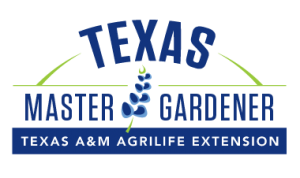By: Sarah Adams
Member of the Big Country Master Gardeners
This month’s bug is the Mason Bee. Mason bees are in the Animal Kingdom, Phylum Arthropoda, Class Insecta, and the Order Hymenoptera. As a review, all insects within the Class Insecta have three body segments: the head, the thorax, and the abdomen. Mason bees are native to Texas and have adapted strategies to cope with the arid conditions prevalent in West Texas. Their ability to efficiently collect pollen and nectar from a wide range of flowering plants allows them to sustain themselves even in areas with limited floral resources. Mason bees play a vital role as pollinators in agricultural landscapes, contributing to the reproduction of numerous crops and native plant species. From fruit trees like peaches and plums to native wildflowers such as bluebonnets and Indian paintbrushes, mason bees facilitate the transfer of pollen, ensuring the production of seeds and fruits. Mason bees earned their name from their remarkable nesting behavior; by using mud or other malleable substances, they create partitions or “cells” within their nests, resembling the work of human masons.

Mason bees are solitary bees with the male mason bees emerging first in spring and the females following several days later. Once they mate, females search for an appropriate nesting site. Each female finds her own nest, marks the entrance with her own unique scent, lays eggs in it, and then provides food for her young. Nesting sites are often hollow stems or crevices. The eggs are laid from the back of the hollow forward, and the female builds a mud partition between each egg. Eggs laid toward the back become females and those toward the front become males. The female gathers both nectar and pollen to feed her larvae. The larvae pupate in the nest in mid-summer, emerge as adults in late summer and overwinter in the nest until they emerge the following spring. They are about a 1/2 inch in length and can vary in coloration across species. Some mason bees will be metallic green, while others are dark blue or black. One mason bee in particular, the blue orchard bee, is a popular commercial pollinator. This species of bee is more efficient than honey bees when pollinating certain orchard crops since they are able to visit more flowers and therefore can transfer pollen more effectively.
While mason bees have adapted to the challenging climate present in West Texas, as we have all heard, all bees are generally having a hard time in today’s environment and the mason bee is no exception. Mason bees face various challenges, including habitat loss, pesticide exposure, and competition with non-native bee species. However, it is much easier for the typical homeowner to provide assistance to encourage and help the mason bees thrive. Unlike honey bees which require special equipment, mason bees can be helped by installing a few bee habitats around the house. And because mason bees are solitary bees, the homeowner does not risk encouraging large swarms of bees to live on their property.
Because mason bees construct individual nests in cavities like hollow reeds and tunnels in wood, gardeners can attract them very easily. Gardeners can provide a nesting site, or a bee hotel, for mason bees outside of a window just like a bird house. The nesting holes for mason bees should be 1/4 to 3/8 inch in diameter and at least 3 inches, preferably 6 inches deep. The hole should be open only on the entry end. Mason bees prefer wood (not pressure-treated or cedar) in which to nest but they will use other materials. Mason bee hotels can also be made by simply drilling holes into a block of wood. Place the hotel in a dry, protected site preferably with east or southeast exposure. A gardener can also use a large soup can or small coffee can which can be filled with paper straws or hollow bamboo stalks of the right size; with wire or string, position the can on its side and hang it outside.
Bee hotels are available in stores and can be easily built with some plans off of the internet. These hotels are cute and add to the garden whether or not the mason bees use them! The hotels should be firmly attached to a solid structure and placed in an area protected from high winds and rain (i.e., with some sort of overhang over the tubes) at least three feet above the ground. The front should face south or southeast because this is where mason bees are most active.
Planting native plants, such as wildflower gardens, salvia, asters, Gregg’s mistflower, and echinacea will support a healthy environment for mason bees. The benefits of planting a native pollinator garden go well beyond only attracting mason bees! These gardens are beautiful, much easier to maintain, and attract a wide variety of other pollinating insects and butterflies.
And keep in mind that if we use pesticides to reduce the population of any insect, the pesticide typically does not discriminate. It will kill mason bees and butterflies just as effectively as it will kill the undesirable insect. So, be careful when applying pesticides. Always read and follow the label!
If you have any questions, call the Taylor County Extension Office at 325-672-6048 or email us at mgardeners@yahoo.com. We hope you visit bcmgtx.org for information on all Big Country Master Gardener events, like us on BCMGA Facebook, and check out training presentations on BCMGA YouTube. We are here to help you.



